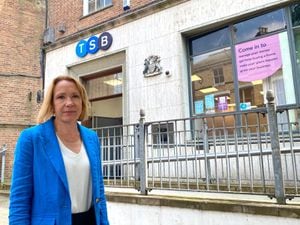Shropshire patients with life-threatening conditions facing 20-minute wait for ambulances
Ambulances are taking more than 20 minutes to reach some patients with life-threatening conditions in Shropshire, new figures have revealed.

The average best response time for getting to Red 1 cases in the past year is about 24 minutes in SY15, which covers Montgomery and surrounding villages, and SY22, which covers villages in Powys including Meifod and Llansantffraid.
Government targets state three out of every four ambulances must get to these most urgent calls within eight minutes or less.

Red 1 cases are where speed of response may be critical in saving life or improving the outcome for the patient, for example cardiac arrest, trauma or serious bleeding.
According to a Freedom of Information Request, more than 90 per cent of ambulances in Shropshire and Telford and Wrekin are failing to get to a patient within the eight minute target time.
But ambulance bosses said the failure is down to lack of funding and delays handing patients over at hospitals.
They claimed they will need 500 more staff across Shropshire to ensure the strict targets are met.
In June ambulance staff lost a total of 393 hours waiting to transfer patients at the county's two main hospitals.
The figures, recorded by ambulance staff waiting at the Royal Shrewsbury Hospital and Telford's Princess Royal Hospital, equate in total to 33 12-hour shifts.
Paramedics waiting in queues could instead have attended a potential 164 of the most serious "red" calls.
Figures for June reveal 278 waiting hours for paramedics at RSH and 115 at PRH. That compares to June 2015, when 90 hours were lost at RSH and 71 at PRH.
The figures illustrate the continuing problem of ambulances having to queue at A&E. The average best response times for the past year have been in Telford. The response time for Red 1 cases in the TF1 area, including Wellington and Hadley, and TF2, which covers Oakengates, St Georges and Priorslee, is five minutes.
An ambulance chief said it is "no surprise" that emergency response target times are not being met.
Murray MacGregor, communications director for West Midlands Ambulance Service, said the trust's budget was "insufficient to meet the needs of the people of Shropshire".
He said: "It should come as no surprise to anyone that West Midlands Ambulance Service does not meet all of its response times in Shropshire. Independent reports have shown for many years that the budget that the trust receives is insufficient to meet the needs of the people of Shropshire.
"In September 2014, Shropshire Clinical Commissioning Group published a report that showed that in addition to the 200 ambulance staff working in the county at that time, WMAS would need an additional 370 staff to achieve performance standards in the county as a whole.
"To achieve standards in every postcode there would need to be 500 additional staff.
"To date, funding increases have only kept pace with additional activity – it has not tackled the fundamental shortfall in any way.
"We now have more paramedics than ever before providing a higher level of clinical care than at any time in the past."
Mr MacGregor said the trust was also working on specific projects to try and tackle the continuing delays at Telford's Princess Royal Hospital and Royal Shrewsbury Hospital.
Between April 1 and July 31 this year, ambulance crews were delayed for over an hour on over 400 occasions.
Mr MacGregor said: "Such delays do have a hugely negative effect on the ability of WMAS to get to patients in a timely manner.
"We do recognise that the hospital continues to work incredibly hard to address this issue, but is having to deal with large increases in demand itself."





